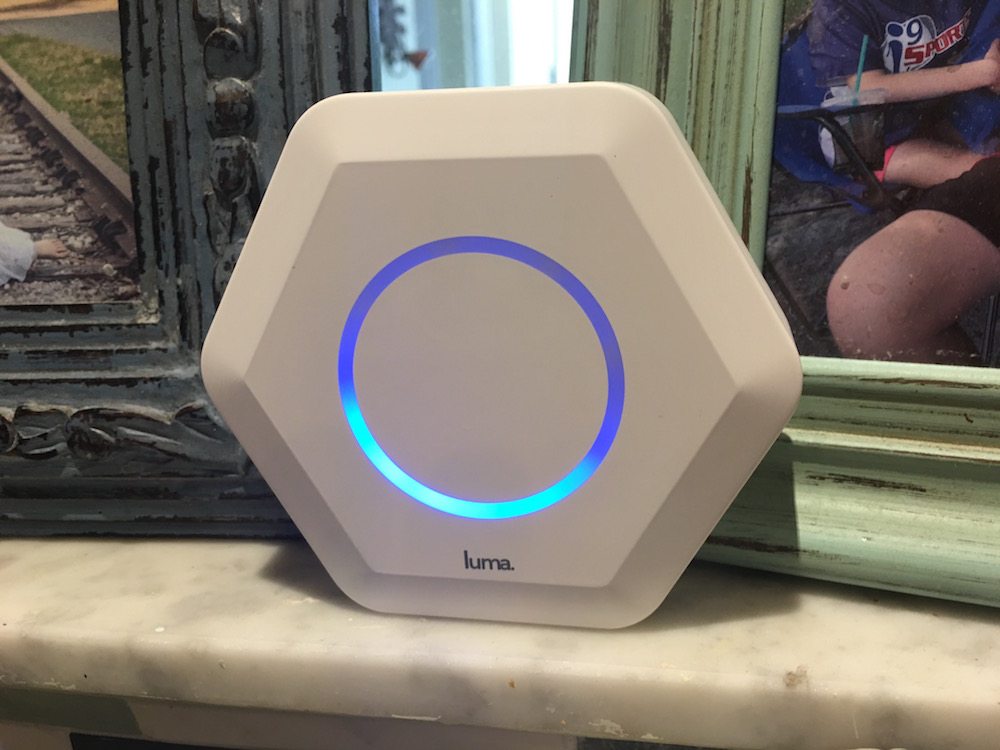
Creating your own home wireless network sucks.
You plug a wireless modem into your router, reset a few things, and then walk through a series of steps in a browser interface that hopefully results in you successfully creating a network. But more often than not, you end up with a Wi-Fi network that broadcasts only to a small portion of your home. Or there are flashing indicator lights that you don’t know how to clear. Or it stops working altogether, no matter how many times you reset it. Even worse, after the third or fourth factory reset, you enter a different password while setting up your network and, rather than even look at the settings for fear of bringing down the whole thing, you’re stuck walking around the house and re-entering network credentials for every phone, tablet, computer, streaming device, and connected appliance in your house.
It’s enough to make you want to move to a Cabin in the Woods (well…maybe not that one).
Personally, I’ve had a blinking light yellow light on my old Airport Express for months, ever since I started using my TiVo Bolt to broadcast a MOCA network in my house (essentially a network over cable lines, so that other TiVos can talk to the Bolt). I spent a couple of days getting it established and a non-insignificant number of Very Bad Words were uttered. Apple has an Airport Utility app, but digging into the advanced settings, I was able to do nothing more than brick my network which resulted in a full network reset and, you guessed it, more Very Bad Words.
So when the box containing my Luma Wifi System (a 3-pack of wireless routers that work together to form a mesh network) showed up on my doorstep, I was skeptical. And a little wary. And then skeptical some more.

I told my family I loved them. I informed my online contacts that I may never see them again. Then I did the unthinkable; I unplugged my Airport Express that had been reliably serving up my wireless network (blinky light and all).

First step was to start up the Luma app, which asked me a few questions about my home and where my FIOS router was located. Then I grabbed the first Luma, looking for all the world like a pill for a giant, connected it to my router via a network cable, plugged in the power cord, then restarted my FIOS router and waited. A blue status light traveled around the face of the Luma, letting me know it was working. When it was done, it blinked green to let me know all was well. I repeated the last couple of steps for the two other Lumas, putting one in the kitchen and the other in my master bedroom. Each time I followed the steps in the app, letting it tell me where to place each Luma for optimal Wi-Fi coverage.

And that was it! I now had a wireless mesh network that covered my entire house. The piece de resistance? I grabbed the LAN cable for my TiVo (the one that was broadcasting the MOCA network that’s caused me so much trouble) and plugged it into the spare network port in the back of the first Luma – it all just worked without me having to do anything other than reboot my TiVo Mini.

Hopping into the app, I could see what my current wireless upload and download speeds were (which stayed nice and constant as I moved through the house as my device was handed off from one Luma to another). Additionally, Luma offers enterprise-level security, keeping track of all my (19!) connected devices and quarantining any that seem suspicious. Similar to Circle, the Luma app lets you create profiles for the various users in your house, letting you assign devices to them, and authorize a content level (based on the familiar movie rating system). Even if you don’t want to get that granular, you can still restrict content by changing the rating for all traffic on your Luma network. Future versions of the app will offer greater customization, letting you tweak those ratings by white-listing and black-listing sites, as well as letting you see exactly where and for how long users on your Luma network have been online with their assigned devices. You can even pause your network coverage altogether with one click.
So how much is all this wireless network magic? Amazon has had preorders up for $299 (with those pre-orders shipping today). That price shifts to the full retail price of $399 as of today. Is that too much? It depends on what you’re looking for. If you just want a device that broadcasts a wireless network, there’s certainly cheaper hardware. But what if you want a network that covers your entire living area with just 10-15 minutes of setup, that has built in enterprise-level security to keep your connected devices safe, and that lets you manage the content your kids can access (and allows you to do this without an engineering degree)? Luma is one of only a handful of products that fills that niche. It provides an impressive amount of utility in one package for the same cost as a high-end router (that does nothing more than broadcast a signal). If your home network wireless coverage is driving you insane, and you have kids at home that you want to keep safe online, you would be well served by checking out Luma. It’s much more than “just a router” and worth the premium. You can pick one up on Amazon or, as of today, the Best Buy website. You’ll be able to walk into a Best Buy and pick one up in the coming months.
Disclaimer, Luma provided media samples for this review. Opinions are my own.




